Population Ecology
1/33
There's no tags or description
Looks like no tags are added yet.
Name | Mastery | Learn | Test | Matching | Spaced |
|---|
No study sessions yet.
34 Terms
How biotic and abiotic factors influence size, distribution, density, and composition of populations
Population Ecology
What is population?
A group of individuals of a single species living in the same area at the same time
Define Density
Number of individuals per unit area or volume
Define Distribution
What are the three Patterns of Dispersion?
Clump Distribution
Random Distribution
Uniform Distribution
Individuals that are found in groups or patches within their particular habitat. The presence of other individuals increases their fitness. Usually prey, few predators (wolves) This is known as…
Clump Distributions
When does Random Distribution usually occur?
When there is an absence of strong attractions or repulsion’s from among individuals
Define Random Distribution
Individuals are spread out in the environment irregularly; the position of one individual is independent of another.
What results from direct negative interaction between individuals?
Uniform Distribution & Territoriality
Uniform Distribution is…
a distribution pattern where individuals are evenly spaced in an environment due to competition or territorial behavior.
-Rare in nature
-Presence of one hinders another
-Distance between individuals is maximized
Territoriality
a behavior exhibited by individuals to defend and maintain exclusive use of a specific area, often to secure resources such as food, mates, or nesting sites. Boundaries are created
How to calculate population size?
1.Census
2.Survey
What does the Census do?
Counts every individual in the population
*The MOST accurate but usually not feasible/practical
What does a Survey do?
Estimates population size by sampling a subset of individuals instead of counting them all, then extrapolating to the geographic range.
*Can be modified based on pop size, geographic range THOUGH some info about the population is needed beforehand, usually feasible/practical
Survey is most effective when
Uniform Distributed or Random Distribution is occuring
Survey NOT effective when…
Clump Distribution is occurring
Examples of Survey Types
1.Area/Volume based survey
2.Line Survey (transect), counting as you move along a line - used when organism that are large (birds or large mammals), not effective if geographic range is large
3.Mark and Recapture survey - VERY effective for birds and large mammals
How to calculate Mark and Recapture Density?

Example of how to calculate density
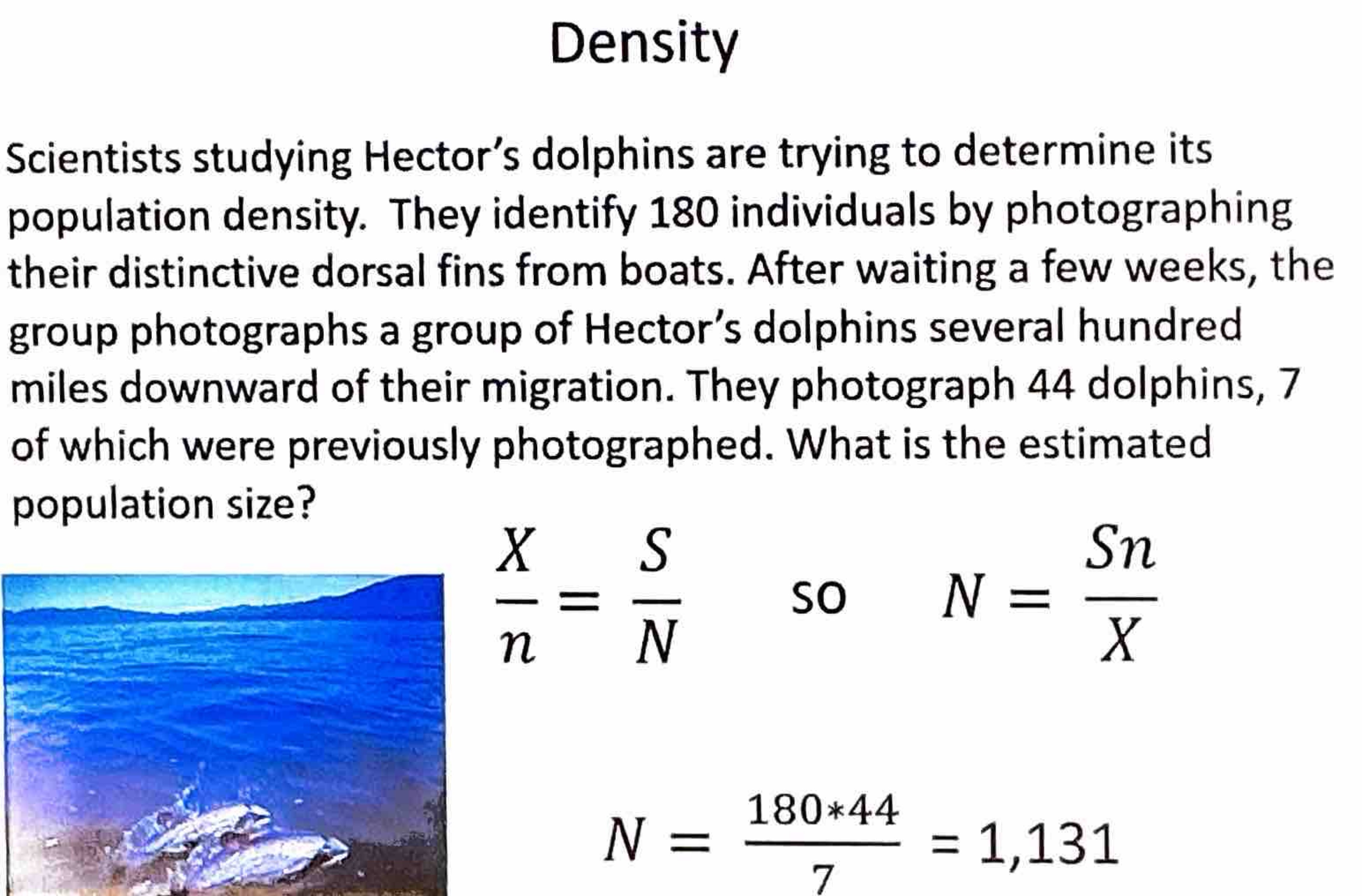
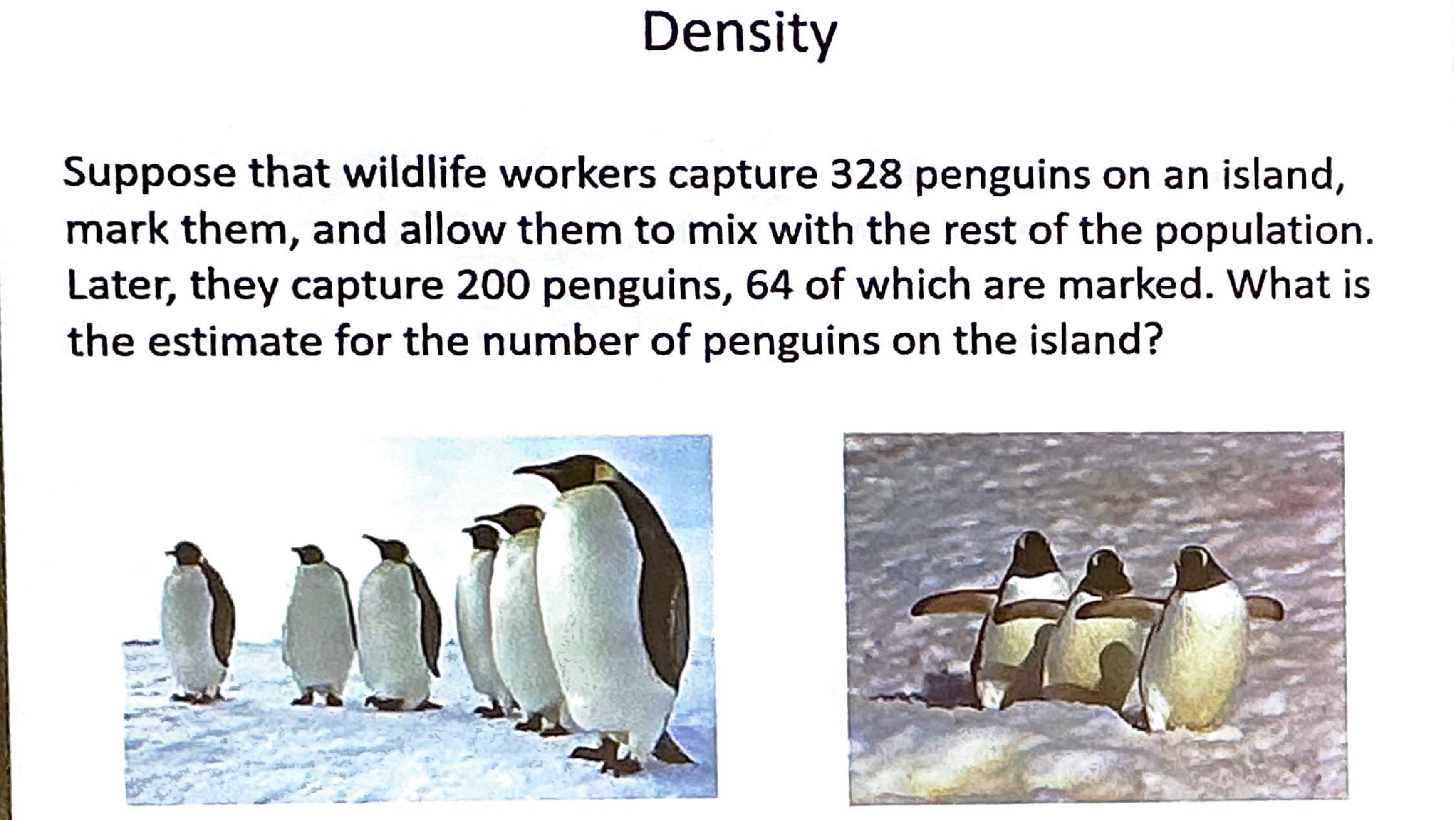
N = (S*n)/x
N = (328)(200)/64
N = ~1025 individuals
True or False
Immigration
Influx of new indi
Define Demography
study of the vital statistics of a population and how they change over time
*Often done using life table
What are Life Tables and what do they do?
It summarizes the mortality and survival rates of a population, showing how these factors affect demographic changes over time.
-Developed in the 1950s for insurance companies
Types of Life Tables
Cohort Table - follows groups of same aged individuals from birth until they all die
Static Life tables - made from data collected at all ages at one time
Static Life Table
A type of life table that summarizes the mortality and survival rates of a population from data collected at one specific point in time.
Static/stationary (vertical)
A specific point in time (snapshot) of all individuals regardless of age
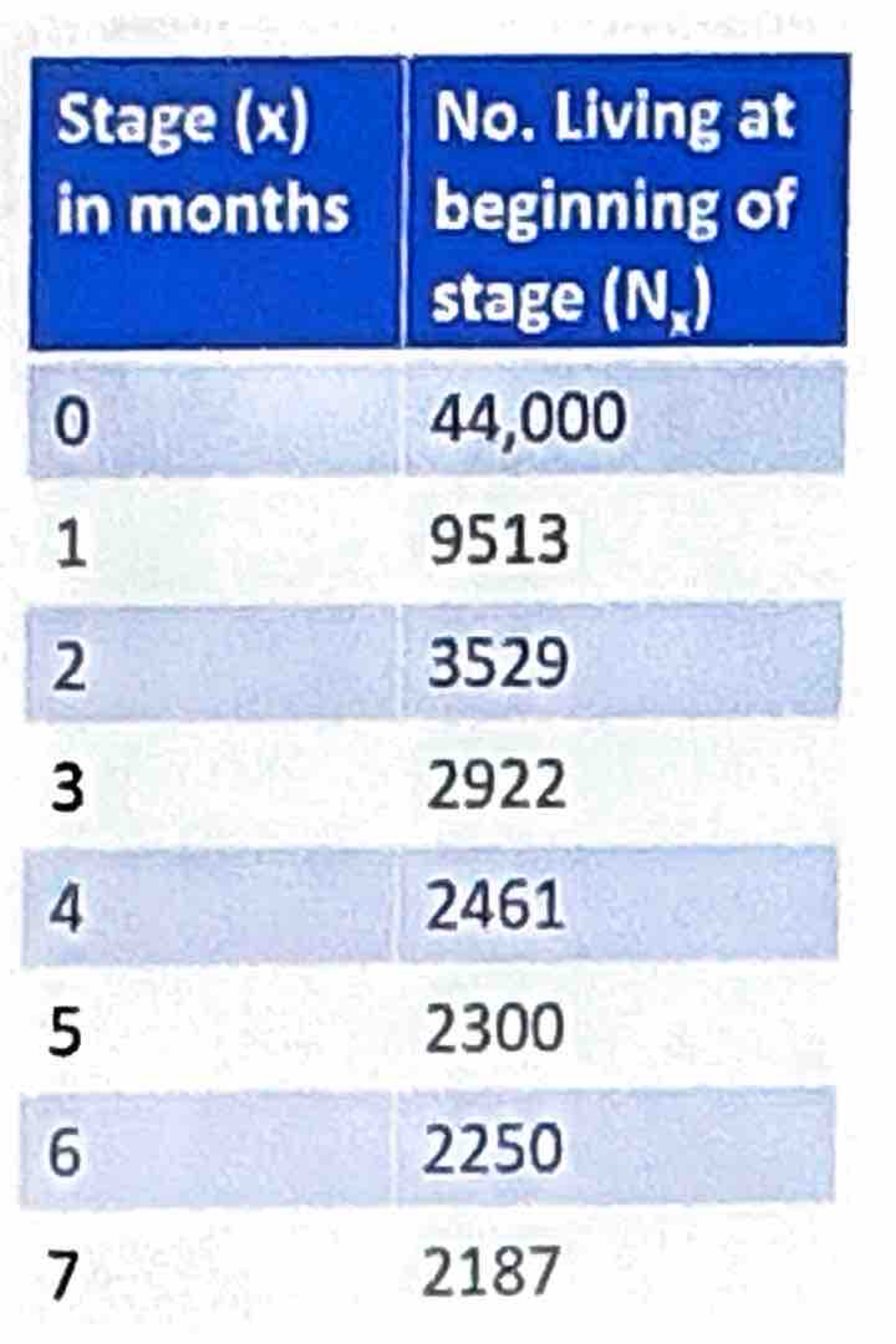
Cohort Table
Dynamic (horizontal)
Much harder to do
Takes more time and money
Takes into account birth until death
The first column (x) specifies the age class while the second column (Nx) is the number of individuals at start of each age class
As (x) increases, (Nx) is equal to or less than the previous (Nx) value
Demographic types
Semelparity
Iteroparity
Semelparity
Have only ONE reproductive event in their lifetime
Iteroparity
Capable of multiple reproductive events
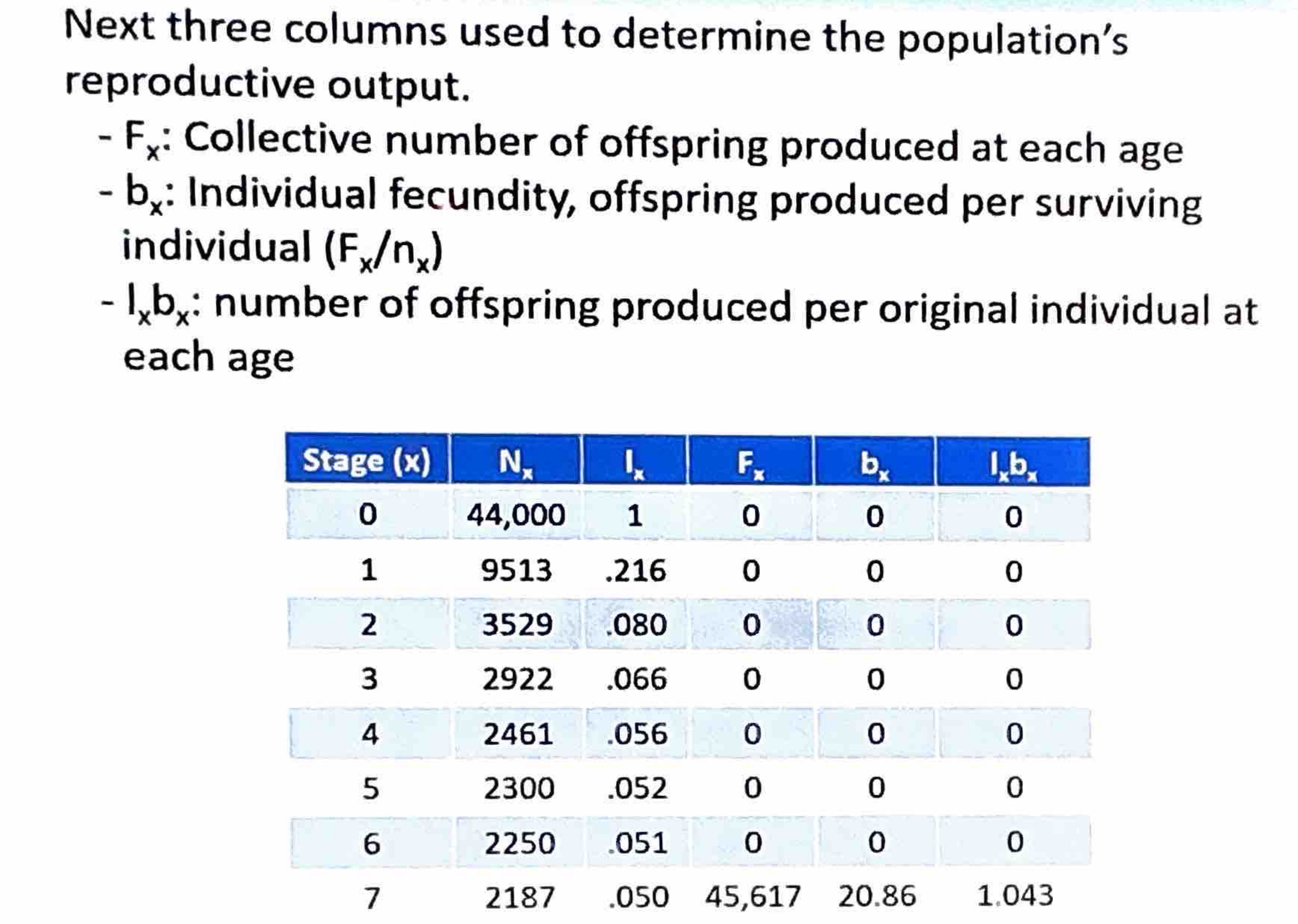
45,617 divided by 2187 = each has an average of 20.86 kids
If R0 = less than 1; population is declining
If R0 = 1; population is replacing itself
If R0 = greater than 1; population is growing
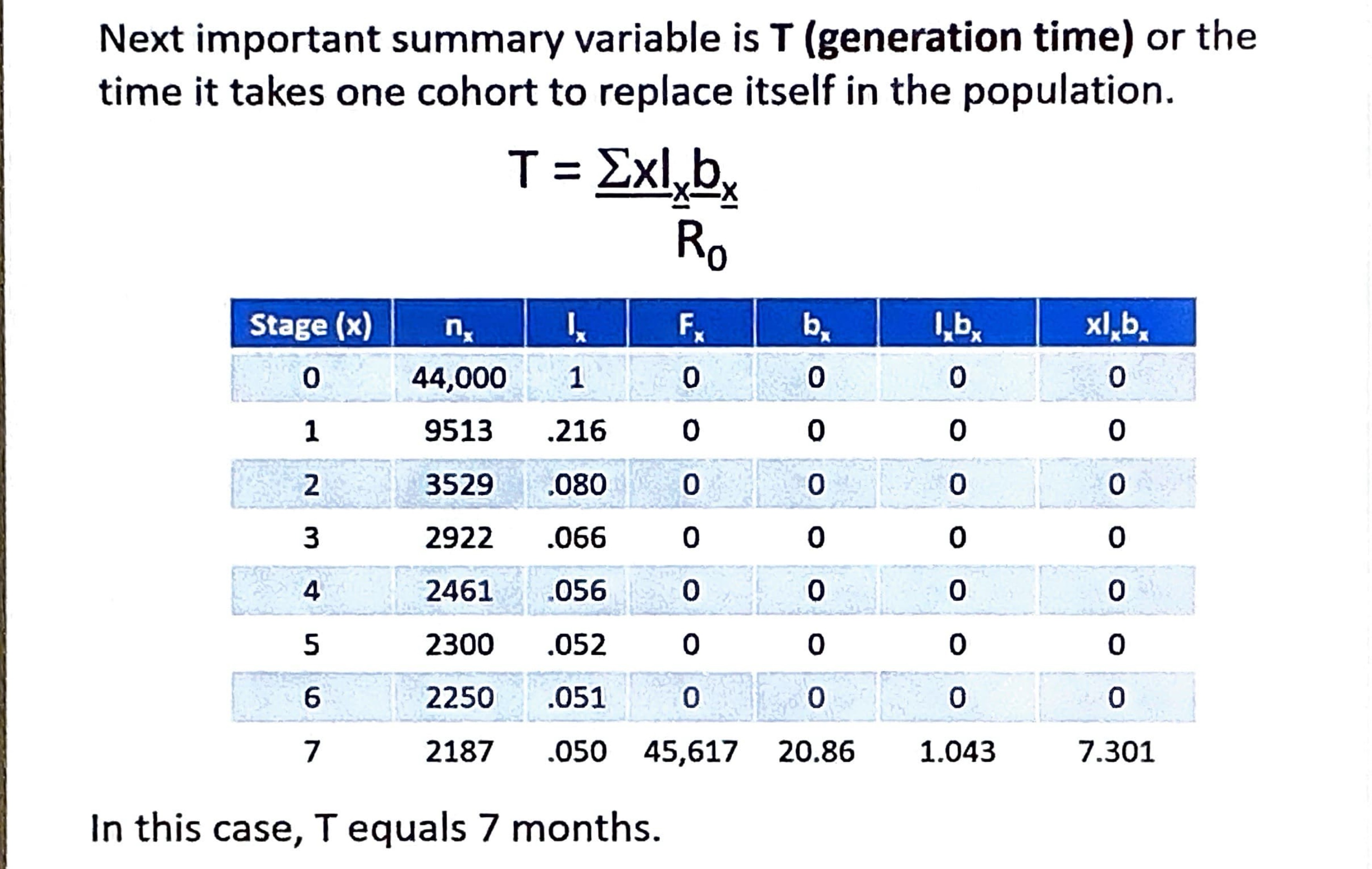
What does T represent and how is it calculated
T represents the generation time
In this case T = 7 months
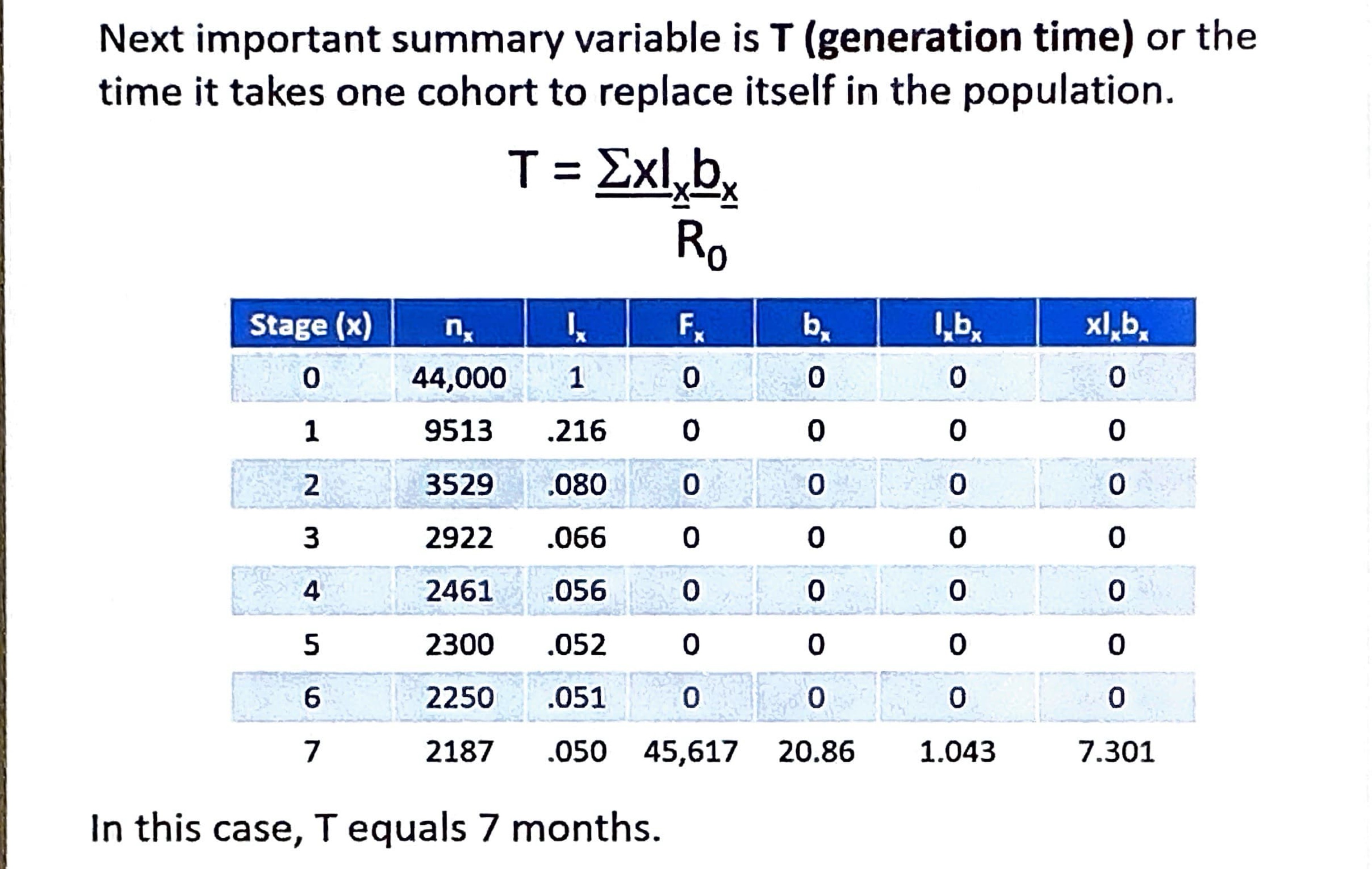
What is r and how is it calculated?
Per capita rate of increase
What is R
Net reproductive rate